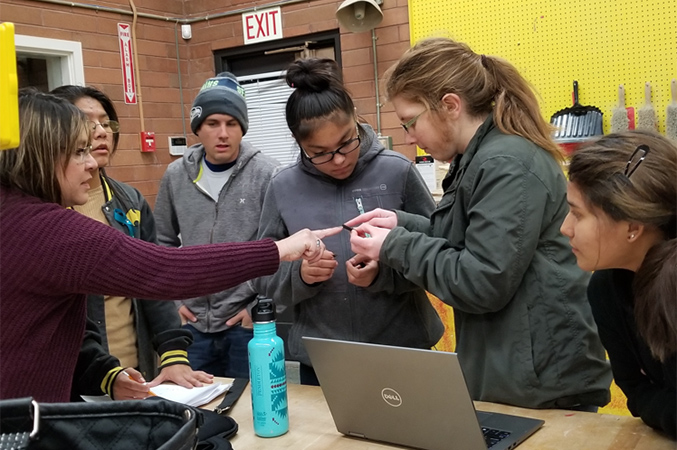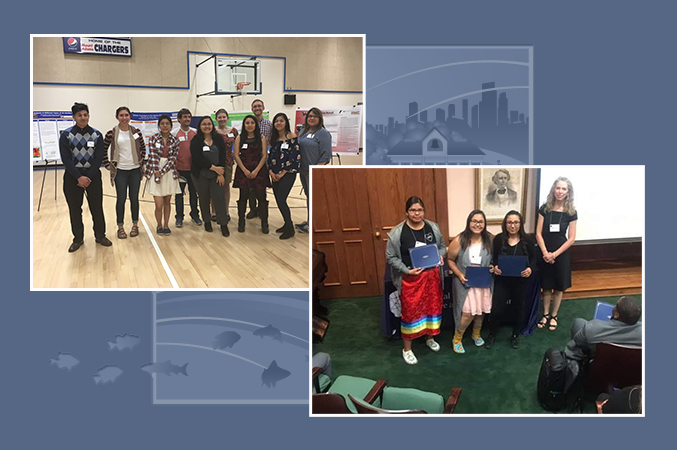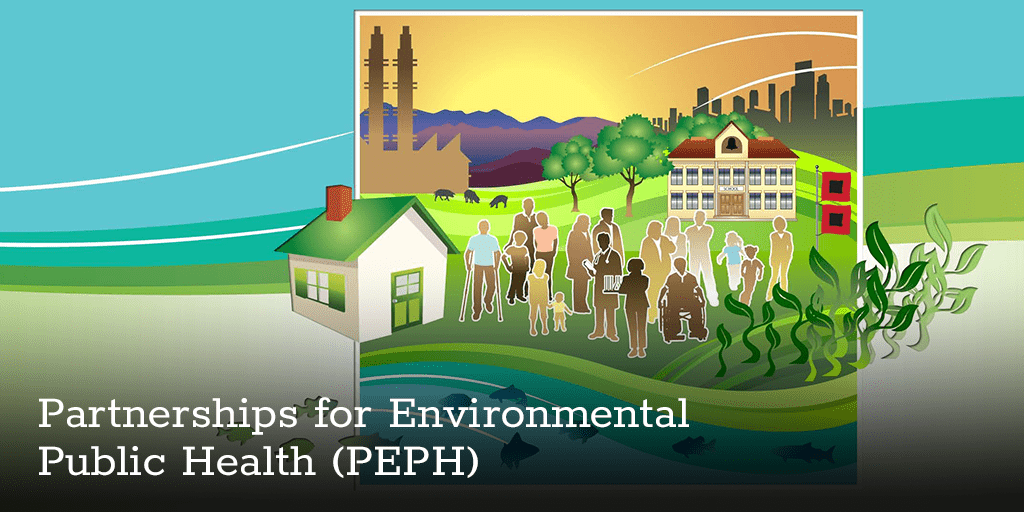A partnership of high school and university students, community members, and researchers developed an air quality curriculum for student-led research for the Confederated Tribes and Bands of the Yakama Nation, a sovereign nation. Although the curriculum was developed for a rural community, it can be adapted and used in informal learning environments in other communities.
The project was funded by the U.S. Environmental Protection Agency (EPA) and NIEHS. An existing partnership between the University of Washington (UW) and Heritage University (HU), a Hispanic- and Native American-Serving Non-Tribal Institution, facilitated the collaboration. UW and HU university partners worked with White Swan High School (WSHS) students in the Yakima Valley region of Washington state. A September 2022 paper describes the curriculum and partnership.
“Many of the students we have worked with over the years have expressed concern with the prevalence of respiratory illnesses in our communities,” stated Jessica Black, Ph.D., director of the HU Center for Indigenous Health, Culture, and Environment. “Students were excited to work with UW scientists who could help them understand the link between air quality and health while conducting mentored scientific research projects.”
An Air Quality Research Curriculum Tailored to High School Students
The curriculum consists of education in environmental health and air quality, student-initiated research projects using low-cost air sensors, and research communication. The program has four objectives:
- Develop student data analysis skills.
- Enable students to design air quality research projects.
- Encourage community engagement on air quality topics.
- Support student communication of scientific results.
HU undergraduate student-mentors delivered the curriculum to the high school students in a once-weekly after-school program over the course of an academic year, covering information on air quality and related environmental health topics through slides. The student-mentors also used hands-on activities, such as a light-scattering demonstration to reinforce key concepts such as how the air sensors operate.
WSHS students and HU undergraduate student-mentors setting up for a light-scattering demonstration that reinforces how the air sensors work. (Photo courtesy of Jessica Black)
“It was important to us to continuously improve the curriculum in response to high school and undergraduate student feedback,” reflected Orly Stampfer, M.P.H., a doctoral student in Environmental and Occupational Health at UW and a lead researcher of this work. “It was a great opportunity to work with the student-mentors to tailor the curriculum. We developed the light-scattering activity in direct response to students expressing interest in learning more about how the low-cost air sensors work.”
Through the curriculum, high school students learned how to use air sensors and interpret the data. Students developed research ideas and presented them to the HU mentors, who, in turn, shared the students’ project ideas with UW researchers. Researcher feedback helped students finalize their research plans.
After refining their research plans, the students installed air monitors with support from their HU mentors. The students and their mentors regularly collected data from the monitors and analyzed the data to answer the research questions for their projects.

HU mentors showing WSHS students how to download data from the air monitors. (Photo courtesy of Aiyana Holt-Zack, an HU undergraduate student-mentor involved in the project)
“Once the students understood the importance of what they were learning in the program, it made their projects feel more personal and helped answer questions they had regarding air quality,” stated Omar Torres, previously a lead HU mentor. “This was reflected in the students’ projects, which were all centered around locations within their own communities.”
High school students learned about presentation methods during visits to HU. With input from the mentors and UW researchers, students prepared and presented posters at a community science fair. Additionally, students had the opportunity to present at a national science fair in Washington, D.C.

(Left) Students and mentors with their posters at the community science fair in 2018 (Photo courtesy of Maria Tchong-French, Research Industrial Hygienist at UW); and (right) WSHS students presenting their work at the 2019 EnvironMentors conference in Washington, D.C. (Photo courtesy of Omar Torres)
“One of the most powerful parts of this program was the intergenerational mentoring that occurred between the UW and HU scientists, the HU undergraduate mentors, and the WSHS students. Each group felt they were making a significant contribution to the well-being of our community and giving back by helping the next generation succeed,” stated Black. “The community science fair was empowering for our student participants. Community members were able to let the students know how important they felt their scientific research was.”
Partnerships Support Development of Curriculum
The success of this curriculum development project can be attributed to a 10-year partnership between HU and WSHS, which has been sustained in part by the HU chapter of EnvironMentors, a program that promotes mentorship in environmental education. UW and HU had also already fostered a relationship through El Proyecto Bienestar, a partnership with a history of multiple NIEHS-funded community health projects. When UW researchers asked HU faculty to collaborate on an EPA grant opportunity to use air sensors in a community-engaged project, HU faculty quickly recommended building off their successful partnership with WSHS.
In addition to Black, Stampfer, and Torres, the project team included HU undergraduate student mentors and UW faculty members Elena Austin, Edmund Seto, and Catherine Karr. In addition to the project team, the curriculum development was also supported by a Project Advisory Committee, which included representatives from the WSHS school district, the Yakama Nation Environmental Management Program, Indian Health Service, a tribal health nonprofit, and El Proyecto Bienestar.
Future Directions of the Program
The HU EnvironMentors program continues to use the curriculum to promote student-led research. The curriculum has been modified in response to HU and student feedback. For example, the team reduced the number of slides in the presentations and increased time spent on hands-on activities. In addition, they are providing students with more instruction on data collection and analysis. The success of this curriculum project helped HU receive a new EPA grant to conduct a tribal air sensor loan program through the EnvironMentors program.
Stampfer continues to lead air quality projects, and has received an NIEHS-funded fellowship award to conduct research on wildfire smoke preparedness in schools. Stampfer’s work emphasizes community engagement, building from valuable experience fostering research partnerships during the curriculum development project.
Source link
www.niehs.nih.gov

